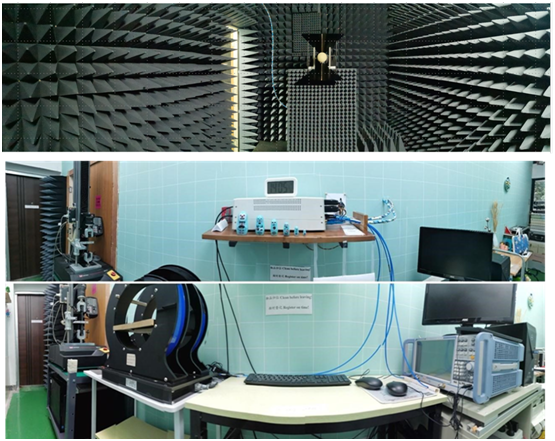An experience of remote laboratory measurements and training at InCSI
A vastmajority of students and academics worldwide were disrupted by the coronaviruspandemic. Added to thiswere the complexities of an economic and political nature that divided theworld into macro-regions and significantly hampered the movement of peoplebetween them. Research labs and collaborative projectsthat require access to equipment were especially vulnerable. Since thebeginning of 2020, we have found ourselves in a new reality, when universitieshad to implement distance teaching, learning, and research.
The Internet has existed for a long time, soeverything related to the organization of online sessions did not require tooradical solutions. However,engineering disciplines imply practice in laboratories, and this element oftraining turned out to be practically inaccessible. Even before the above-mentionedevents, a new communication paradigm was coined in social networks, includingelements of artificial intelligence (AI) and augmented reality (AR). Recently,these ideas have taken shape under the capacious term “Metaverse”. Likeany powerful idea, it could not remain within its original framework andexpanded into a wider range of applications. And if in social networks thiscould be understood as a “departure from reality”, then in the technicalsciences, “laboratory reality” had to be returned back under therestrictions that arose. Key players in the test equipment market have beguninvesting in distance learning and lab access methods. A good example here is the Keysight company with its “hybrid learning” approach.
Our microwave measurementlaboratory at the Institute for Composites Science Innovation (InCSI) turned out to be wellprepared for emerging trends. From the very beginning, a high level ofautomation was envisaged, with particular attention to user interfaces. Thesoftware for free-space measurements and also some additional signal processingalgorithms are based on the Python programming language together with PyCharm IDE allowing remote team programming. Software control ofdevices is carried out with the help of SCPI script commands and the PythonVISA library (pyvisa). Forfree-space measurements and controlling microwave switches, we use Node-Red from thefamily of IoT interfaces which communicateswith software blocks and peripherals through a publish-and-subscribe networkprotocol. In the future, this communication format will facilitate theconnection of new devices. Microwave measurements may require precise antennamovement, for example for TRL calibration. For these purposes, the antennas aremounted on mobile platforms driven by the belt actuators and Kollmorgen servo motors. The motors,including the controller and drivers, are connected to a local EtherCAT network, which is can beapproached from KAS interface or Python modules.Thus, the movement of the antennas does not require the presence in thelaboratory and can be performed remotely. The legacy software and interfacesthat are still used today for bench impedance measurements were created in LabVIEW 2015. They still workwell, but we plan to modify/rewrite all the instrument control algorithms in Python.The huge number of libraries available in Python makes it easy to automate andintegrate. General remote access to the Vector Network Analyzer (VNA) and PC iscarried out through the VNC servers installed on them. From the side of the remote user, only the VNCviewer is required.

PHOTOGRAPH: InCSI, ZHejiang university IMAGES
The technologies listedabove make it possible to carry out all types of measurements remotely, withouta physical presence in the laboratory. The laboratory only needs an assistantto prepare and connect the samples. In a condition when the arrival in Chinafrom abroad is almost impossible, the laboratory methods we developed havebecome truly saving for the continuation of joint research with foreign collaborators.In addition, it is now possible to organize online sessions for students,combining a usual PPT presentation and real-time measurements. During one ofour recent sessions, the presenter Dr. Dmitriy Makhnovskiy was in England and Dr. Azim Uddin who is a Post-doctoral researcher inInCSI was in Hangzhou, and a dozen more students joined the session from Chinaand Pakistan and successfully conducted useful real-time testing. If necessary,the students can even connect to the facilities and practice their skills (whichrequires a multi-user license from RealVNC).
The example of our laboratory shows that awell-chosen architecture allows a group to quickly respond to emergingchallenges and expand the scope of research tasks. We have not only maintainedthe already established collaborative ties but are also planning new research,both inside China and abroad.
By: Dr. Azim Uddin


